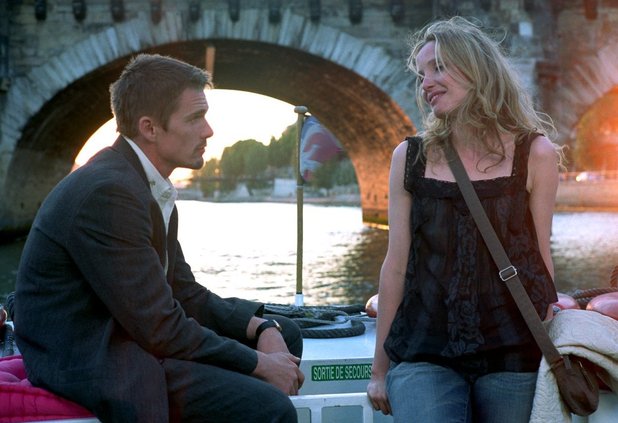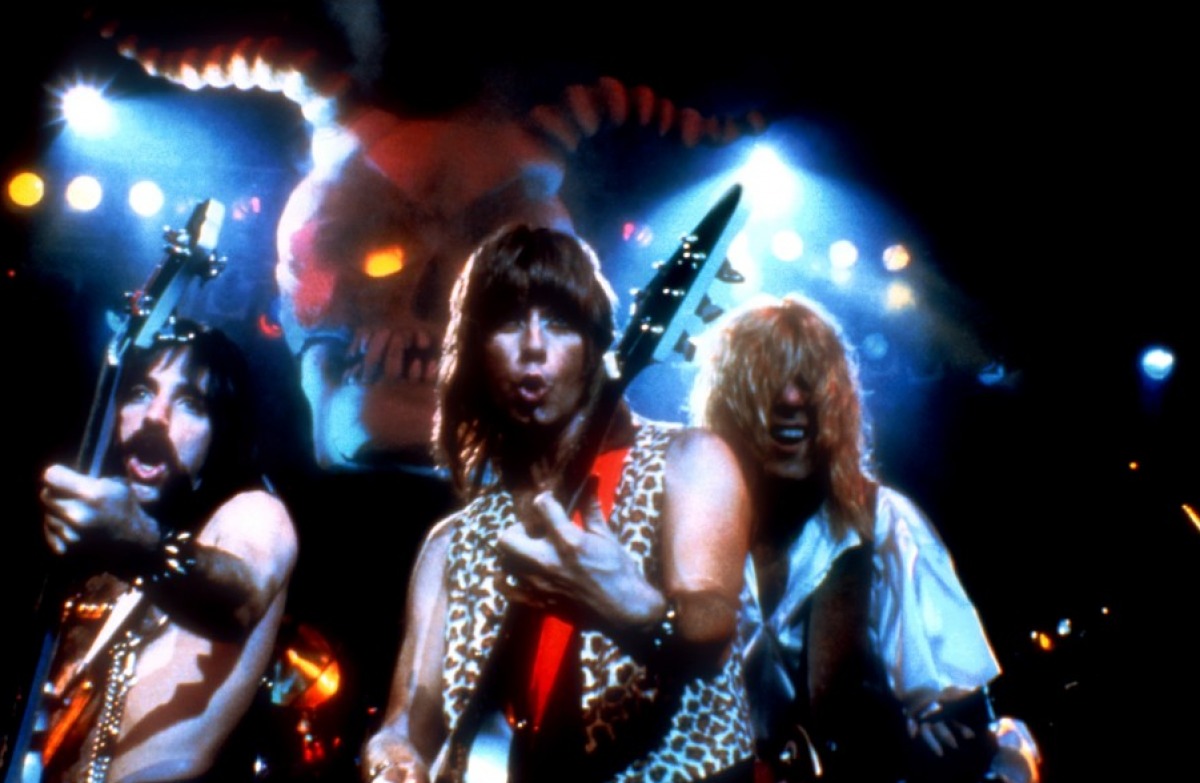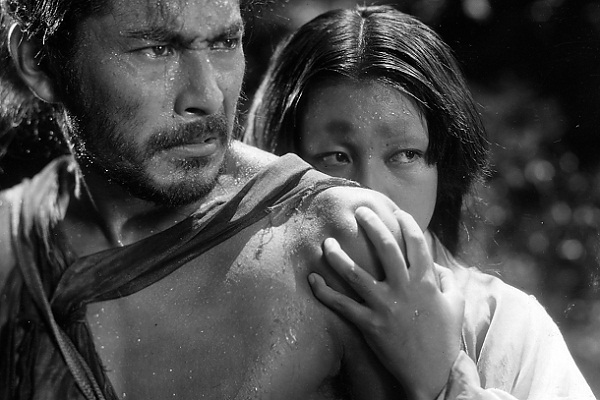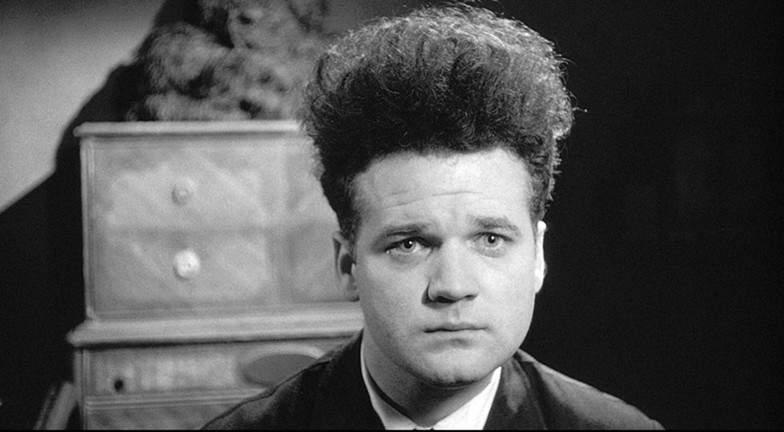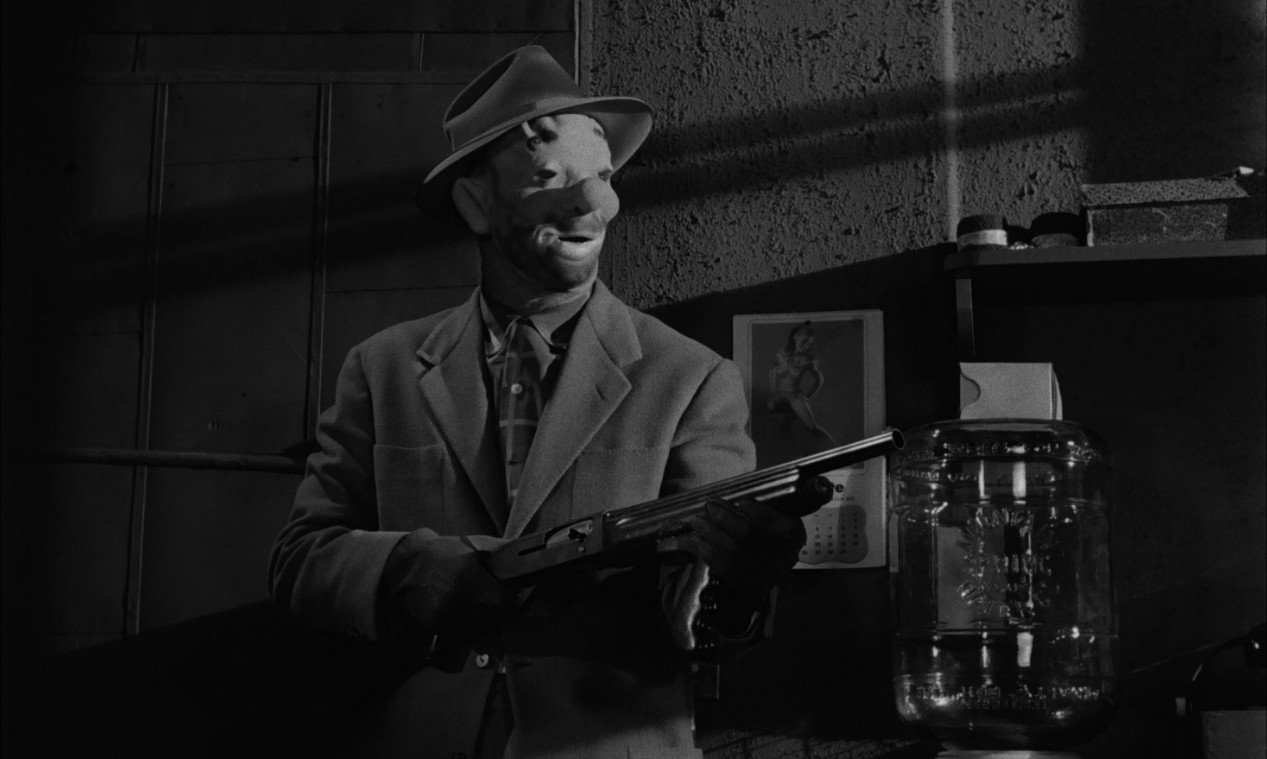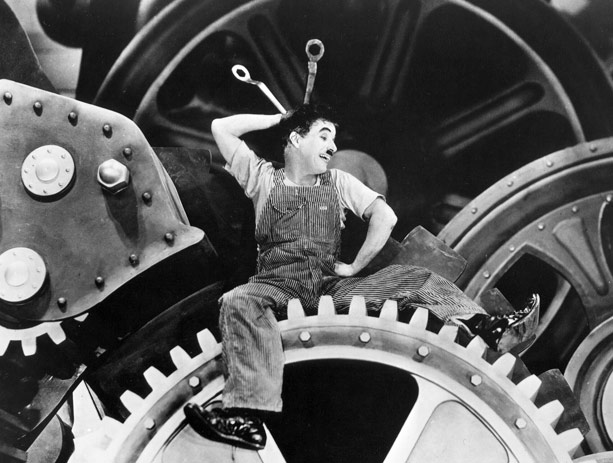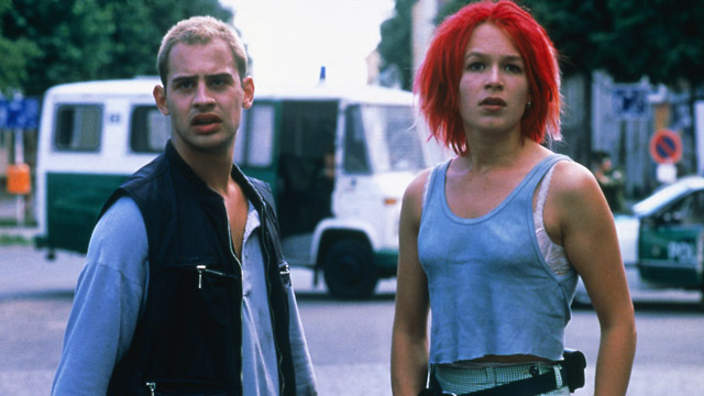When it comes to watching great films, duration frankly should not matter. A great movie is great no matter its length. But let’s face it, busy schedules these days can keep us from tackling epics. As our attention spans get ever shorter, an 85-minute runtime might look at a whole lot sweeter than a 145-minute one.
This list therefore presents 30 must-see films under 90 minutes, perfect for any occasion when time is short. Despite their succinct runtimes, each of the films are excellent and diverse, varying significantly in genre, pace, structure, and tone. As wide-ranging and impressive as the selections are, this list is undoubtedly non-comprehensive and subjective.
There are plenty more just like this, many of which I have not seen, but look forward to when I have an hour and a half to spare before I have to run out the door or head to bed!
1. This is Spinal Tap (Rob Reiner, 1984)
Clocking in at a mere 84 minutes, This is Spinal Tap is widely regarded as one of the greatest comedies of all time, celebrated for popularizing the mockumentary. The cult classic, Rob Reiner’s directorial debut, follows the floundering metal band Spinal Tap, “one of England’s loudest bands,” consisting of charmingly idiotic members David St. Hubbins, Nigel Tufnel and Derek Smalls (Michael McKean, Christopher Guest, Harry Shearer), each equipped with faux British accents.
Reiner and his cohorts manage to achieve something quite precious in the world of comedy by making an intelligent film about stupidity. The film succeeds at delivering unforgettable lines that are quoted to this day, whether it is “these go to eleven,” or “none more black.” The film’s improvisational nature keeps it both alive and intimate. Yet at the same time, Spinal Tap is never unfocused. Its tight editing separates it from most comedies and ensures that every joke, and there are plenty, serves a purpose.
This is Spinal Tap is a skewering but compassionate satire of both a trend in rock music and the documentary form itself. As mock (or dare I say mach) a film this is, Spinal Tap nonetheless feels genuine. For one, the music was real, composed and played by the actors themselves. Reiner’s clever manipulation of stock footage creates a hilarious backstory for the band that was highly plausible. The film in fact was so convincing that many early viewers believed that the film was actually a documentary.
Rock musicians George Harrison, Jimmy Page, Robert Plant have verified the accuracy of the film, which hit close to home for its playful presentation of the pains and humiliations of a touring band. This believability is key to what makes Spinal Tap an empathetic film. Viewers will alternately cringe in sharp second-hand embarrassment for these characters and empathize with them, in spite of their absurdity.
The film’s short running time encourages and warrants multiple viewings to laugh again at now-classic gags (Stonehenge) and pick up on subtle jokes (Isle of Lucy jazz-blues festival). Spinal Tap’s influence is pervasive in contemporary comedy and fortunately set the groundwork for Christopher Guest’s later mockumentaries such as Waiting for Guffman and Best in Show, which feature many of the same talented members of its ensemble cast.
2. Rashomon (Akira Kurosawa, 1950)
Winner of the Golden Lion at the 1951 Venice Film Festival, Akira Kurosawa’s Rashomon was largely responsible for introducing Western audiences to the richness of Japanese cinema. The film has transcended the realm of cinema due to its nuanced understanding of perspective, psychology, and storytelling.
Impressively, the term “Rashomon effect” would enter the vernacular, coming to represent the subjectivity of truth. Yet while Rashomon is perhaps most famous for its creative concept, it is moreover a beautifully crafted film, complete with evocative cinematography, intense acting, and a majestic score.
Set in 11th century Kyoto, the film sets it tone with shots of torrential rain at the ruined Rajomon gate. There, a priest, a woodcutter, and a commoner sit dejected, unable to make sense of the murder of a samurai and the rape of his wife they witnessed earlier that day. “I just don’t understand,” says the woodcutter. Kurosawa then takes us through three varying personal accounts of the incident.
We first hear from Toshiro Mifune’s animalistic bandit, before hearing from the broken wife of the murdered samurai, and then the samurai himself via a medium. Their contradictory testimonies are revealed to us in vivid flashbacks. Juxtaposed against the barrenness of Rajomon Gate, the forest where the murder occurred is depicted as wild and impassioned. Daring camera movement charges the scenery with a fluidity that reflects the variability of memory.
Cinematographer Kazuo Miyagawa shoots directly at the sun, creating a lens flare that suggests that light struggles to illuminate the lives of our characters through the trees. The film is pensive about human nature and cynical about its flaws, but manages to be uplifting nonetheless.
3. Eraserhead (David Lynch, 1977)
David Lynch’s feature debut Eraserhead is a surreal horror that is in equal parts captivating and confounding. The film loosely tells the story of Henry Spencer, played by Jack Nance, a passive and blank-faced figure who wanders through a dreamlike world that he seems to know as little about as we do. While he rarely speaks, Nance exudes discomfort and anxiety on his face, translating the film’s abstract horrors into human fears of intimacy and parenthood.
These fears are demonstrated most clearly in Spencer’s relationship to his newborn baby, a mutilated creature more reptilian than human that keeps him up at night. How Lynch exactly created the grotesque baby-like figure remains a mystery to this day.
More than just body horror however, Eraserhead is notable for introducing us to Lynch’s strange cinematic world, one that we willingly inhabit despite its disturbing nature. Filmed in striking black and white, with bizarre angles and eerie shadows that recall German Expressionism, Eraserhead is a memorable visual experience.
Lynch captures a nightmarish quality in both the desolate industrial landscape and the cold and claustrophobic interiors of Henry’s apartment. The unnerving feel of the film’s setting is coupled with and sustained by the creepy, unrelenting aural landscape created through Alan Splet’s sound design.
4. The Killing (Stanley Kubrick, 1956)
Better known for his long films like 2001: A Space Odyssey, Barry Lyndon, and The Shining, Stanley Kubrick began his career with several films that were each under 90 minutes. His highly inventive 1956 heist film, The Killing, fills those minutes with delicious fragments of an elaborate racetrack robbery. Kubrick’s ensemble of robbers is comprised of perfectly cast character actors.
The architect of the heist is Johnny Clay, a suave and tough criminal played by Sterling Hayden, who rounds out his team with a corrupt cop, a pathetic betting teller, a sharpshooter, a wrestler and a racetrack bartender. But make no mistake, this is no Ocean’s 11. As entertaining as the heist is to watch, this feverish jigsaw puzzle is always imbued with a sense of dread.
Kubrick demonstrates his control in a film that is all about the deterioration of control. An almost laughably detached voiceover helps us keep these characters and Kubrick’s radically non-linear narrative straight. With wry hard-boiled dialogue written by pulp writer Jim Thompson, Kubrick creates a harsh and unforgiving atmosphere.
The potently cynical picture takes advantage of unforgettable locations and striking lighting from cinematographer Lucien Ballard. The heist film went on to inspire plenty of others, Quentin Tarantino’s Reservoir Dogs perhaps the most famous example.
5. Modern Times (Charlie Chaplin, 1936)
Despite its release in 1936, almost a decade after the emergence of the talkie, Charlie Chaplin’s Modern Times stubbornly reverts back to silent film. The film’s ultimate strength, however, comes from its inevitable confrontation with modern life. Chaplin’s Tramp is the everyman, embodying the conflicting elements of his interwar experience.
The power of Chaplin was in his scope. The Tramp proved capable of transcending national class boundaries, being taken seriously by avant-garde artists, bureaucrats, and everyone in between. As he moves from the assembly line, to the jailhouse, to the restaurant, it is his humanity, agility and intuition that allow him to glide through even the cruelest of experiences unscathed and undefeated.
The film famously satirizes technology and the mechanization of the era. But Chaplin’s film is not merely a condemnation of modern life, but also an ode to and acceptance of it. In one of the most unforgettable sequences in cinematic history, the Tramp floats through the cogs of the machine as though he were a ballerina. Modern times are undeniably hard and menacing, but the individual can triumph over them.
Modern Times marked the swan song of Chaplin’s legendary Tramp character. Finally conceding to the talkies, the Tramp produces sound at the end. But as if an act of silly defiance, he sings gibberish, assuring us that he was not surrendering his humor or humanity. At the film’s conclusion, the Tramp walks off toward an uncertain future along an open road. Chaplin would never bring back the Tramp, but his legacy endures.
6. Run Lola Run (Tom Tykwer, 1998)
Directed by Tom Tykwer, the 1998 German thriller, Run Lola Run, is an adrenaline-fueled ride across the streets of Berlin. From the film’s get-go, a pendulum swings. The clock is already ticking, and we are thrown into Lola’s hyperkinetic world, provided solely with a quote from German football legend Sepp Herberger: “The ball is round, the game lasts 90 minutes, everything else is pure theory.” Running only slighter shorter, Run Lola Run is a delightful blend of film, animation, and music.
Lola, played by Franka Potente, has to acquire 100,000 Deutsche Mark in twenty minutes in order to save the life of her boyfriend, Manni, a small-time drug dealer who accidentally left his boss’s money on the subway. After her moped is stolen, Lola is left with no option other than to run to Manni through the streets of Berlin. In similar fashion to Rashomon, the film is broken up into segments that differ slightly.
Yet while Rashomon’s segmentation is based on difference of perspective, Run Lola Run is more interested in time and chance, free will and fate. Along her three runs, Lola embodies the role of a video game heroine à la Lara Croft. She has three lives to perfect her journey.
Each minute change can result in a dramatically different outcome, as revealed by flash-forward stills of each of the people Lola encounters along her route. Lola’s frenetic pace is matched by a propulsive techno soundtrack by Tykwer, Johnny Klimek, and Reinhold Heil.
In contrast to the static nature of Manni, who is stuck in his phone booth, desperate, Lola’s mobility is liberating and her urgency is contagious. With each of her steps, Lola reconstructs the spatial geography of Berlin, a city historically fragmented and divided. In addition to its stylized visuals and its clever video game conceit, Run Lola Run has surprisingly solid philosophical underpinnings. It is not only fun, but also thought provoking to run with Lola in this unlikely hybrid of arthouse cinema and fast-paced action.
7. Persona (Ingmar Bergman, 1967)
Ingmar Bergman’s Persona is a controversial and difficult film, but one built on poetic imagery and a harrowing story. Bergman begins with a six-minute prologue, a montage sequence that teases suggestive images of crucifixion, an erect penis, and a tarantula before showing a young boy rise from his bed and touch a face that is projected on a wall.
By revealing the projected nature of these images, Bergman deliberately points to the artificiality of film itself and establishes Persona as a self-reflexive film about cinema from its outset.
The film then proceeds to set up its story between its two protagonists, stage actress Elisabeth Vogler, played by Liv Ullmann, who in the middle of a performance lapses into complete silence, and her nurse Anna, played by Bibi Andersson, who accompanies her at a beach house for several weeks. Elisabeth’s silence raises plenty of questions. According to the doctor, it reflects “the hopeless dream of being—not seeming, but being.”
As an actress faced with constant pressures of presentation, Elisabeth knows that as long as she remains silent, she never has to lie. But she is also shocked into silenced by the unspeakable acts that surround her, symbolized by images of the Vietnam War and the Holocaust, which confirm Bergman’s political intent.
Deprived of communication, Anna struggles to coax Elisabeth out of her silence and ends up revealing more and more about herself. By the film’s ending, the two characters verge on a singular persona; Bergman’s experimentations with doubling yield haunting, painful results.
